
Five thousand years ago, the present author created a guide to the main acts associated with the classic 70s-style electronic sound. The response was generally quite positive in nature (which the present author humbly appreciates), and several individuals requested a sequel focusing on later acts and developments in Electronic music.
While very familiar with several of the artists and genres specifically requested, the present author was originally reluctant to focus on such acts when creating the original Electronic Guide article, due to uncertainty over what the reception among this site’s general audience would be to such sonic manifestations which may seem more conductive to head trips, dance parties, and computer study sessions as opposed to the typical Black/Death nihilistic desecration. However, it ultimately didn’t take much for the present author to eagerly acquiesce to popular demand, and create this sequel guide you now have here before you. With the highly intricate and accomplished nature of some of these more elaborate artists’ productions, plus Nuclear Holocausto Vengeance of Beherit and Varg of Burzum (among others) being fans and even participants of the 90s rave scene… perhaps this may not seem as out of place as external appearances or set abstract mores may suggest.
Based on the specifically requested artists/styles, and the present author’s own personal taste, this article will mainly focus on post-1990 atmospheric/ambient/dance music in the vein of so-called IDM: Goa/Psy, etc. Generally speaking, the present author is relatively unfamiliar, and even unenthusiastic, in regards to other later stylings that diverge from the general “sound” focused on here. This second volume will also skip over some of the most prominent electronic styles of the 1980s such as synthpop and EBM, which may possibly get featured in yet another future guide dealing with the general “alternative”/Synth/Goth music of that wonderful decade for popular music.
Without further ado, the guide may now commence!
You don’t really want to hear some wanker singing about love lost or love gained or, you know, whatever their problems are. You know, really what you want to hear is alien, otherworldly sounds that you’ve never heard before that just confuse you and excite you […] and you know you can only really get that with Electronic music.
– Simon Posford

COIL
One of the most infamous entities in underground music, Coil emerged out of the Throbbing Gristle/Psychic TV< collectives to embark on a roughly two-decade career comprising dozens of experimental releases varying wildly in both style and quality. Their earliest 80s work generally deals in the realms of vaguely “Post-Punk” stylings eccentrically twisted through an - at best - iconoclastic and psychedelic, and - at worst - greasy and pederastic lens. 1986’s Horse Rotorvator is the only acceptable recording in in this approach; however their rejected soundtrack for the classic 1987 horror film Hellraiser is one of the more interesting of their early forays into ambient, as well as being notable for directly influencing Burzum.
1991’s LSD would see the group embarking into a new direction paralleling the emerging “Acid House” scene with several worthy disquisitions in Electronica finding their way among some more standard, greasier numbers.
As far as the present author is concerned, the group’s greatest work is veritably and unquestionably their late-90’s explorations into pure, droning, bottomlessly deep voidscapes of hallucinogenic Synth-esthesia interspersed with genuinely pleasant vocal/lyric-led tunes of a hypnotic, nocturnal ambience.
Their final recordings from the early 2000s are somewhat of an idiosyncratic blend between Joy Division and The Godfather soundtrack. For some reason this material is widely heralded by Internet posters as the group’s paragon, but the present author has never found it to be especially compelling.
Recommended Works:
- The Unreleased Themes for Hellraiser [1987]
- Love’s Secret Domain [1991]
- Time Machines [1998]
- Astral Disaster [1998]
- Musick to Play in the Dark [1999]
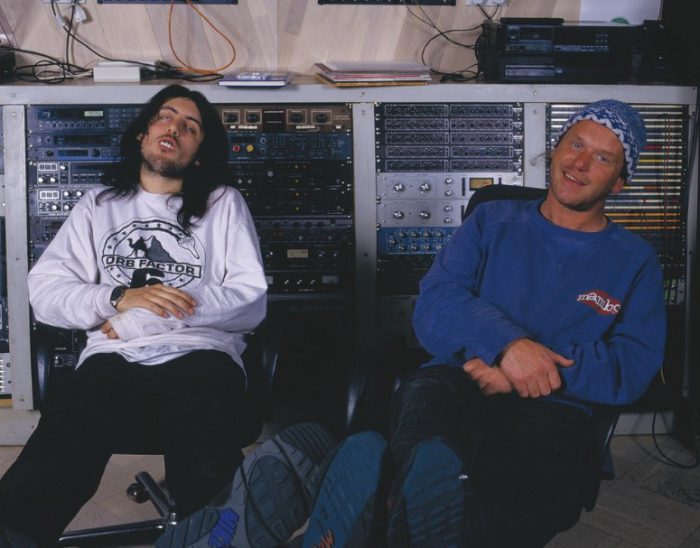
THE ORB
British duo The Orb’s double-disc debut is one of the most influential and defining works of the 90s electronica landscape, perhaps the ambient/acid/house/techno/trance/dub equivalent of The Dark Side of the Moon or A Blaze in the Northern Sky in terms of reputation.
Admittedly some aspects of the production may feel a bit stilted or dated in comparison by today’s standards; and unquestionably all of the other entries in this article surpass it in terms of their vision and accomplishment.
However, these are all unavoidable and minor points to fixate on and ultimately detract nothing from the general pioneering excellence of the album, making this enduring classic continuously relevant for more than mere historical reference.
Recommended Works:
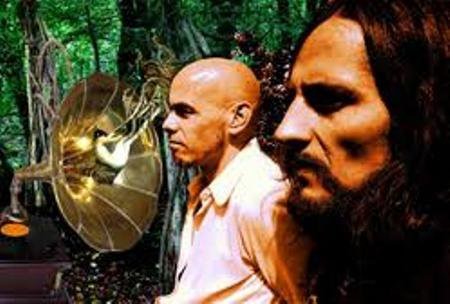
The Future Sound of London
“FSOL” are one of the most prominent and multi-faceted artists of the 90’s UK Techno scene.
As far as the present author is concerned, their greatest work is unquestionably (and by some distance) 1994’s double-disc Ambient compendium Lifeforms, a highly diverse and engulfing collection of various pieces of entrancing dark psychedelia which sound impressively ahead of their time.
The same cannot be said for earlier releases such as the band’s 1991 debut Accelerator, which while well-constructed and enjoyable in its own right, is a more straight-forward percussive clubby affair whose transparently dated sound is more likely to make 21st century listeners think of those old “YOU WOULDN’T STEAL A CAR” anti-piracy PSAs, as opposed to feeling like they are on an alien planet as with Lifeforms.
The immediately succeeding post-94 releases and their “industrial”/hip-hop-infused nature completely lose the present author, however there is some casual sympathy to be found when turning the clock back to Brian Douglas’ 1989 project Stakker, an endearing yet limited early exploration into this then-new aesthetic.
Recommended Works:
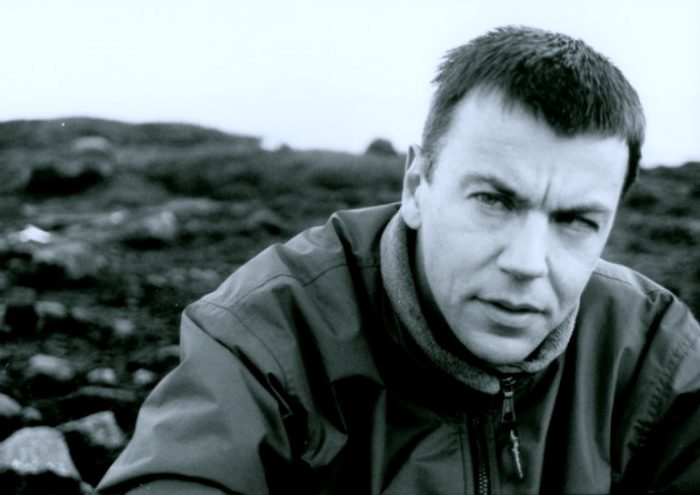
Biosphere
Hailing from the northernmost parts of Norway in the actual Arctic Circle, Geir Jenssen’s work as Biosphere crafts an inimitable sound that smooths over the 90’s “IDM”/“ambient techno” style with a more subtle, chilled atmosphere that curiously manages to sound rather organic and genuinely evocative of remote Arctic landscapes of eerily cool stillness. Substrata especially could potentially appeal to fans of, say, Ildjarn’s Ambient works.
Recommended Works:
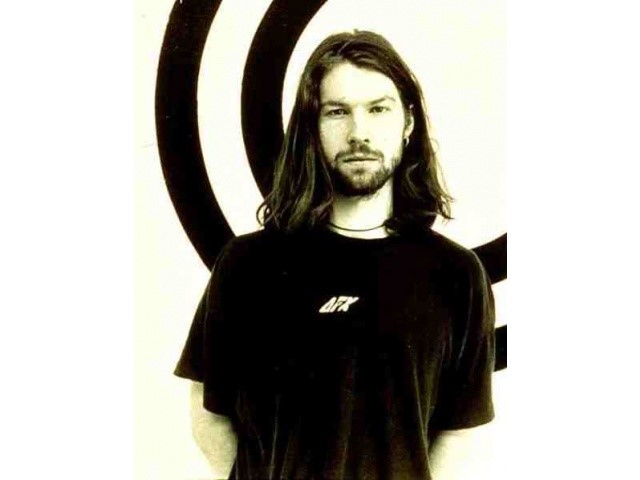
Aphex Twin
Richard D. James, the red-bearded asthmatic blagger behind Aphex Twin, is quite possibly the most critically acclaimed and broadly influential of the artists featured in this article. It is not easy to summarize his work into a one sentence description, as a variety of styles are to be found throughout various phases of his work, and even inside the same CD.
His debut Selected Ambient Works 85-92, despite its title, is not quite comprised of what may be commonly conceived as “ambient” music, and generally showcases a diverse mix of lively tunes and moods which embody electronica in the 90s.
Self-described by its creator as being akin to “standing in a power station on acid”, follow-up Selected Ambient Works Vol. II is a completely different record from its predecessor. Genuinely living up to its title as being “ambient” in the vein of Eno, yet embodying a deeply subtle and mysterious atmosphere that doesn’t sound quite like anyone else before or since, it is unquestionably the greatest work of his career.
The succeeding releases throughout the second half of the 1990s would have enduring popularity and fascination for their experimental “breakbeat” stylings and accompanying grotesque imagery, however the present author generally finds this material to be incongruous at times with their personal taste, and at any rate, lacking compared to the accomplishments of James’ earlier works.
Recommended Works:
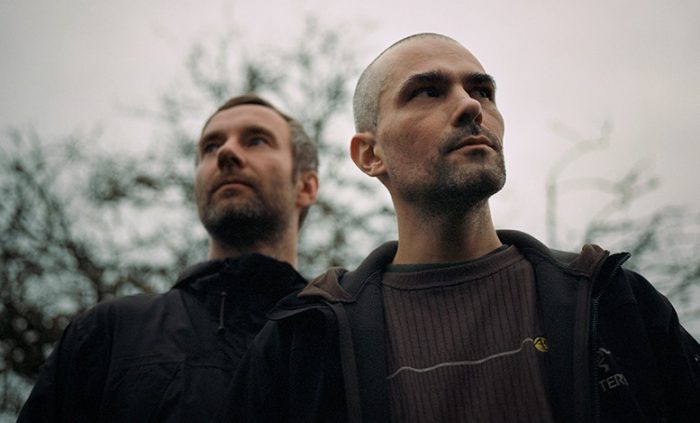
Autechre
Unquestionably among the most high Level of all the artists here from any objective standpoint, Autechre have been at the forefront of creating genuinely challenging audio abstractions for decades.
The group’s earliest releases are in the general mold of the prototypical “IDM”/techno sound of their era and are consequently much more conventional in nature compared to the output they would be later known for. However, these are still original and quality works in their own right, especially 1994’s exquisite Amber, whose more canorous and “synthy” nature is by far the most consonant with the present author’s personal makeup.
Around the halfway point of the decade, the group’s iconic record Tri Repetae and related minor releases signaled the true advent of the group’s almost aggressively original and frighteningly inscrutable trademark production style defined by highly dense claustrophobic melanges of digital tones and frequencies inhumanly orchestrated with multi-layered rhythmic precision and complexity, and a strange sense of underlying harmony awaiting those able to withstand the submergence into apparent chaos.
Succeeding releases proceed to delve incessantly further and deeper into such obscure yet blatantly unavoidable regions of jagged surrealism to the point of arguably bordering on Noise Music (in terms of inaccessibility to the average listener), with such experimental depths perhaps reaching their culmination on 2005’s Untilted.
The present author feels it would be dishonest to list such works as recommendations due to admittedly being rarely in the mood to actively return to these releases, partially attributable to their potentially migraine-inducing propensities in spite of their inarguable merits. 2002’s extraordinary Gantz Graf EP is certainly a good taste of what this style can entail for neophytes curious to see where the group delve into after their more accessible and defining 90s efforts.
Recommended Works:
–Incunabula [1993]
–Amber [1994]
–Garbage [1995]
–Peel Session [1995]
–Tri Repetae [1995]
–Anvil Vapre [1995]
–LP5 [1998]
–Gantz Graf [2002]

Underworld
Welsh-Anglo collective Underworld are one of the most enduringly original stalwarts of post-1990 Electronica, crafting a disarmingly inimitable shapeshifting voice that is both contemporaneously accessible and experimentally complex.
Having their origins in various semi-abortive New Wave projects during the 80s, in ‘92 the team of producer/wizard Rick Smith and vocalist/lyricist Karl Hyde transmogrified into an entirely new entity fully in tune, and eventually defining, of the decade’s sonic zeitgeist. Unquestionably their artistic golden age was the material produced in that era with critical third member Darren Emerson, however they have still been continuously releasing output of a creative and quality nature to the present day, albeit with (comparatively) less peaks and consistency.
Generally one of the more difficult groups out there to adequately describe in writing, there is a seemingly endless variety between the “vibe,” structure and timbre of any given Underworld track, despite them all being unmistakable products of the band’s trademark identity. From signature stadium/club “bangers” to chill-out pop tunes to titanic surrealist techno-synth symphony epics and practically everything in-between, there is likely to be at least one song out there to appeal to any given individual’s taste, including initial skeptics. (Or at least, so the present author’s IRL experience would seem to confirm.)
The uncanny effect of Hyde’s charming yet disorienting stream-of-consciousness poetry weaving through Smith/Emerson’s exceptionally intricate and diaphanously colourful soundscapes, while more subtle yet jagged than certain later entries in this article, are extremely potent in terms of evoking unique, confusticating experiences of euphoric synesthesia.
The apotheosis of the band’s creative essence is unquestionably 1996’s Second Toughest in the Infants, one of the present author’s all-time personal favorites in this style, and more than single-handedly worthy of earning the group’s inadvertent press designation as “The Pink Floyd of Techno”.
Recommended Works:
–dubnobasswithmyheadman [1993]
–Dark and Long [1994]
–Second Toughest in the Infants [1996]
–Pearl’s Girl [1996]
–Beaucoup Fish [1998]
–A Hundred Days Off [2002]
–I’m a Big Sister, and I’m a Girl, and I’m a Princess, and This is My Horse [2006]

Woob
The debut offering from Paul Frankland’s High Level Ambient outlet Woob is an underrated gem and one of the present author’s top favourites in this article. A thoroughly engulfing affair which masterfully weaves through hypnotically profound aural tapestries with cinematic dramaticism, defined by an earthy sample-driven surrealist sound collage almost prefiguring the future stylings of Shpongle, albeit far more minimalist, linear, primitive, and tangibly accessible to the naked mind’s eye.
Recommended Works:
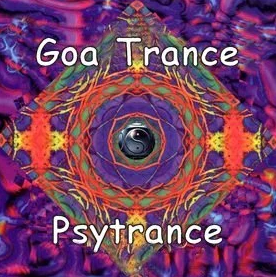
Goa Trance / Psytrance
“Goa Trance” or “Psytrance” is the most high Level form of “dance” music, having its initial emergence around the middle of the 1990s.
The characteristic, almost clichéd, repetitive style of this genre is defined by layers upon layers upon layers of decadently mellifluent synthesizer textures with catchy yet slightly sinister melodicism being fluidly projected and maintained through an incessantly rapid yet hypnotically steady BPM interspersed with various surrealist sound effects intended to altogether coalesce into an aquiline experience of inter-dimensional sensory overload.
Simultaneously energetically inflaming yet pacifyingly meditational; externally “cheesy” in appearance yet with an unnervingly inextricable association with the alien; ornamentally complex in terms of artisan construction yet practically pornographic in terms of its relative artistic homogeneity and jolting sense of instant-hyper-gratification… the Psy sound is a strangely congealed entity in spite (or because) of its inherent contradictions.
Accordingly, the modus operandi of Goa/Psy could be seen as either a more fluid and expansive evolution of 80s EBM (a view some of the genre’s earliest expounders are on record of espousing), or quite simply as Tangerine Dream/“Berlin School”-style sequenced space-synth hypnosis projected through a throbbing dance pulse and turn-of-the-millenium Sci-Fi aesthetic.
While this may admittedly sound ludicrous to some, the present author has found the energy evoked by this style of music to be the closest direct parallel to Metal out there, at least as far as non-electric-guitar-based music goes in terms of evoking an immediately visceral yet hypnotically entrancingly surging kinetic effect of cartoonishly mystical proportion, undergirded by a stringently “logical” sense of structure and craftsmanship curiously giving way to influences of the non-linear. The praxis of certain acts in Black Metal in particular can’t help but come to mind, plus much of the cosmic minor-key melodicism among Goa could very easily be translated into Metal riffs in a different context.
As far as actual examples are concerned, Tel Aviv-based duo Astral Projection is the present author’s top pick among the classic straight-forward exponents of this genre. Man With No Name, Dimension 5 and Electric Universe are also among the worthy contenders of such classic early stylings. Later sonic movements extending off from roughly the past 15 years have a tendency to break from the “purity” of the 90s synth trance sound into either a more contemporary bubstep/“EDM”-type deal or alternatively a more condensed, difficult and greasier “dark” style. Naturally, the present author finds much of these later developments to be comparatively unappealing, however the insane creations of Ajja from Switzerland and Psykovsky from Russia do deserve recognition for their objective accomplishments as far as such developments are concerned.
Recommended Works:
–MAN WITH NO NAME: Moment of Truth [1995]
–ASTRAL PROJECTION: Trust in Trance [1996]
–ASIA 2001: Psykadelia [1997]
–ASTRAL PROJECTION: Dancing Galaxy [1997]
–DIMENSION 5: Transdimensional [1997]
–PLEIADIANS: I.F.O. (Identified Flying Object) [1997]
–SHAKTA: Silicon Trip [1997]
–X-DREAM: We Created Our Own Happiness [1997]
–JAÏA: Blue Energy [1998]
–MAN WITH NO NAME: Earth Moving the Sun [1998]
–ASTRAL PROJECTION: Another World [1999]
–BLUE PLANET CORPORATION: Blue Planet Corporation [1999]
–ASTRAL PROJECTION: Amen [2002]
–ELECTRIC UNIVERSE: Cosmic Experience [2004]
–PSYKOVSKY: Da Budet [2009]
–AJJA: Tulpa [2012]
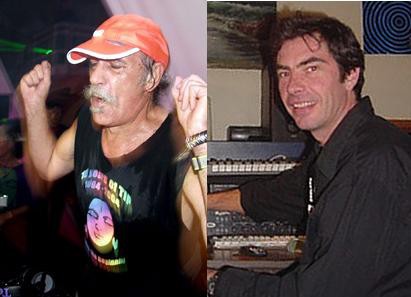
The Infinity Project
One of the oldest and key acts comprising the original Goa scene. The earlier Trance tracks by this group — such as compiled on the Feeling Weird record — may admittedly sound rather dated or cheesy, even by the standards of the era; nevertheless they are among the more memorable and fun works in this sub-genre.
However, such stylings of electro-alien-dance-tunes this group helped pioneer are ultimately overshadowed by their foray into “Ambient music” proper on the Mystical Experiences album. One of the first examples of the so-called “Psybient” or “Psychill” genre which takes the timbre/aesthetic of Goa into the context of (relatively) slower subtle atmospherics and significantly more complex layered production vaguely akin to “IDM” or even Progressive Rock structures (as opposed to the repetitive rapid-dance-surge of Trance), Mystical Experiences is notable for having a more “pure” crystalline synth-oriented sound than some of the more dense and eclectic production of later defining acts in this style.
Recommended Works:
–Feeling Weird [1995]
–Mystical Experiences [1995]
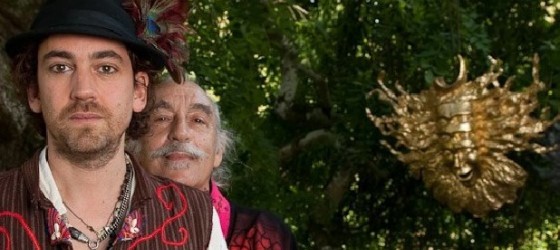
Shpongle / Hallucinogen / Younger Brother
The unearthly sonic emanations of audio magus Simon Posford are so far beyond anything else among their ostensible contemporaries, that internal signifiers such as “high level art” effectively become nothing but meaningless understatements in the presence of such inconceivably alien currents.
Having his effective start as an iconoclastic Goa/Psy DJ in the mid-90s as Hallucinogen, the earliest Posford creations under this moniker are unquestionably the pinnacle of that genre by a vast solution of continuity. 1995’s debut Twisted is already both the archetypical prototype and definitive conspectus of that entire “style”, to the point that is fairly common to come across individuals espousing that it is essentially “the only trance album you really need”. 1997’s The Lone Deranger proceeds to take things even farther into the realms of kinetic multiplex surrealism, and manages to sound impressively un-dated compared to anything else from that era, being more than able to holds its own against any “darkpsy” brain-scrambler of present times.
After having objectively mastered and transcended Goa and exhausted the entirety of its potential, the only possible direction for Posford to go after his gradual disinterest in the anti-creative monotony of the trance scene was to channel his ever-continuously expansive vision of psychedelia into an entirely new vehicle, initially starting from an ambient (or “psybient”) perspective and immediately progressing into regions where no words can be effectively used as a comforting point of reference.
From the late 90s up to the present day and ongoing, the wealth of material Posford has released under the Shpongle moniker has been of an infallibly peerless nature. With flautist/spoken word personality “Raja Ram” of The Infinity Project as official “second member,” as well as a plethora of studio and live session/guest performers assimilated and transformed into Posford’s monolithic inter-dimensional electro-tapestries, the genuinely sui generis nature of this eclectic music’s esoteric essence transcends all feeble attempts at pigeon-holing.
A decent attempt at a two word summary of the Shpongolian M.O. could be simply: “controlled chaos”. The relentlessly surreal engulfingness of the thoroughly hallucinogenic audile manipulations could be said to achieve an effect through music akin in parallel to the accomplishments of James Joyce’s Finnegans Wake, organized by a typical production being intricately and flawlessly comprised of literally hundreds of separately layered and intersecting “voices”, all of which are totally orchestrated from an ineradicably intentional consciousness… it is indeed no exaggeration to say there is more going on in a single Shpongle track than most artist’s entire albums. However, a large portion of these pieces’ true nature is nearly impossible to be registered by the average “unaided” listener, with the effects of time dilation, audial widening and more than a few “other” elements being intuitively taken into account when crafting the inherent mask. For the listener who does manage to rend the veil and grasp a little more of what this music really is, the resulting effect can give rise to any mix of astonishing, exhilarating and/or disturbing sensations, effectively making practically everything else out there – musical and beyond – to be nothing but a joke in hindsight.
Not only is every Shpongle album a stylistically distinct and qualitatively coequal masterpiece, but so is nearly every single individual track in its own right. The present author’s personal favorite is 2001’s Tales of the Inexpressible, however they could fully understand the reasoning behind any of the others being selected as a given individual’s top pick. All that being said, the two most immediately accessible entry points to teetotalers and neophytes would have to be either 1998’s Are You Shpongled? from a 90’s Ambient/Synth perspective or 2005’s Nothing Lasts… But Nothing is Lost from a kinetic IDM/Prog perspective.
Also worthy of attention is Younger Brother, Posford’s project with collaborator Benji Vaughan. Their masterful 2003 debut is practically indistinguishable from Shpongle stylistically, although slightly more “clubbier” yet no less (in fact, arguably more) ominously surreal. The introduction of Leftfield associate “Ruu Campbell” on vocals coincides with a turn towards an exterior of more “conventional” rock/pop aesthetic. This approach still leads to a success with 2007’s Last Days of Gravity being a typically atypical Posford psycho-tronica release occasionally blended with elements of modern prog rock and downtempo. However 2011’s Vaccine proceeds to completely lose the script and is literally an attempt at a straight-forward Coldplay-esque indie/pop/rock record (with the exception of a select few relatively interesting psychedelic tracks amidst the failed experiments in mass appeal).
Suggested Reading: Finnegans Wake, Gödel Escher Bach, Pickman’s Model
Recommended Works:
–HALLUCINOGEN: Twisted [1995]
–HALLUCINOGEN: The Lone Deranger [1997]
–SHPONGLE: Are You Shpongled? [1998]
–SHPONGLE: Tales of the Inexpressible [2001]
–YOUNGER BROTHER: A Flock of Bleeps [2003]
–SHPONGLE: Nothing Lasts… But Nothing is Lost [2005]
–YOUNGER BROTHER: The Last Days of Gravity [2007]
–SHPONGLE: Ineffable Mysteries From Shpongleland [2009]
–SHPONGLE: The God Particle [2011]
–SHPONGLE: Museum of Consciousness [2013]
–SHPONGLE: Codex VI [2017]
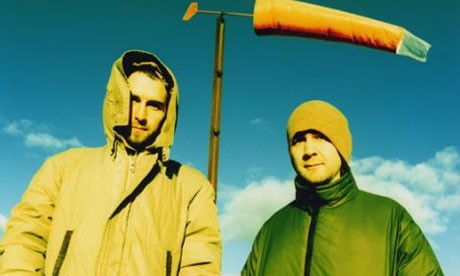
Boards of Canada
Despite being inextricably associated with the indifferentiable tastes of the average “Internet hipster music fan” forum denizen, the work of Scottish duo Boards of Canada is legitimately commendable in nature. Their distinctive sound is a condensed yet elusive sonic fever dream blending clickity hip-hop/techno percussion, dreary synth melodies, and various seemingly-random vocal samples to produce a uniquely “chill” yet uncanny ambience.
While generally not one of the present author’s recurring personal picks, they will endorse a preference for 2002’s Geogaddi as it lessens some of the more Hip Hop-influenced elements of the group’s productions, and maintains an even more subtly oneiric experience with vague ghostly hints of impending dis-ease lurking in the background.
Recommended Works:
–Music Has the Right to Children [1998]
–Geogaddi [2002]
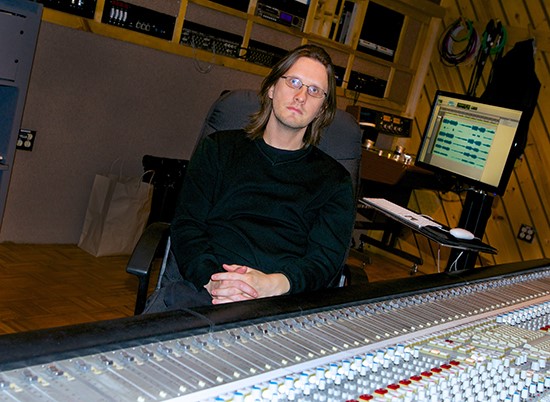
Bass Communism
Best known as the individual behind Porcupine Tree, Steven Wilson is a renowned master of sound design and general champion of ambient music among his other varying and plentiful endeavours over the years.
Long before they became the Radiohead/Tool/Coldplay/Opeth-influenced entity on their more famous 21st century output, the original Porcupine Tree material from the early 90s is an almost unrecognizably different project altogether. The deeply surreal yet dark Psychedelic Rock of these early recordings sounds somewhat like a cross between post-Barrett/pre-Dark Side Pink Floyd and The Legendary Pink Dots organically transported into the era of Trance, and the extremely diverse sonic terrain covered within that 1989-1996 period is of an endlessly mysterious and imaginative essence. 1991’s On the Sunday of Life, 1992’s Voyage 34 and 1995’s The Sky Moves Sideways are enduring favourites of the present author.
In the late 90s, around the time his main project accordingly began to switch its focus from the cosmic to the contemporaneous, Wilson launched his solo ambient vehicle Bass Communion to perhaps continue on exploring the experimental/atmospheric elements of his vision, but in the context of a more focused and mature outlet. Despite the present author’s aforementioned affection for those early Porcupine Tree recordings, it is difficult to deny that Bass Communion is the most artistically pure and conceptually High Level of any of Mr. Wilson’s manifold projects from an objective standpoint.
The minimalist modus operandi of Bass Communion is based on the extremely subtle and gradual expansion and eventual transformation of a certain noise or tone to become a scintillating, multi-layered soundscape of pure synesthetic infinity. The hypnagogic moods and styles explored range from the almost Steve Roach-esque tragic “Drugged” cycle from the debut, to literal Noise music as the basis of the project’s later 21st century works.
Perhaps all great ambient music should at least on some level soothe some of the more fraught elements of the human listener’s emotional-physical composition, while simultaneously — and more importantly — transcending such feelings of microcosmic angst by expanding such sensations to the context of a much vaster, non-anthropomorphic vision of the greater external Reality and subsequent discovery of more ultimate manifestations of Sorrow and/or Solace which have their non-temporal dwelling therein.
Accordingly, by inevitably eschewing the human element of lyrical/rock-worship tendencies and focusing on the purity of the sound texture tapestries themselves, Bass Communion manages to arrive both at an even more fathomless manifestation of Psychedelia than the early Porcupine Tree recordings, as well as a more subtle, serious and profound exploration of macrocosmic melancholy on a near-Schopenhauerian scale as opposed to the deeply sincere although occasionally awkward focus on adversity and suffering from an empathetic humanist perspective on latter-day Porcupine Tree and S. Wilson solo works.
Recommended Works:
–Bass Communion I [1998]
–Bass Communion II [1998]
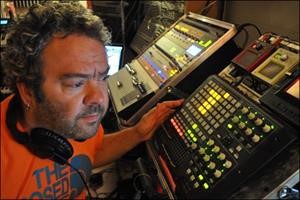
Ott
A widely renowned record producer and sound engineer who has collaborated with the likes of Brian Eno, Ott’s musical output is among the most mind-bogglingly elaborate in the “Psybient” spheres.
An associate of Shpongle Posford, fittingly the first record he released under his own name was a collection of classic Hallucinogen tracks completely remixed and almost unrecognizably altered and transformed into his own personal cerebral “chill-out” style. This style, most purely expressed in his “proper” debut Blumenkraft, is so richly complex in its endless layers and attention to detail that it’s almost impossible for the mind to fully handle on nearly the same Level as Posford himself; albeit with a more subtle manner of execution, eschewing a blatantly cartoonish alien psychedelia for a monochrome twisted personal-computer aesthetic almost as if Autechre leaned more towards laid-back Reggae-esque “sessions” as opposed to full-on unforgiving ventures into quasi-Noise.
Later releases are gradually but sharply diminishing in returns due to an insidious infatuation with Dubstep and similar contemporaneous stylings.
Recommended Works:
–HALLUCINOGEN: In Dub [2002]
–Blumenkraft [2003]
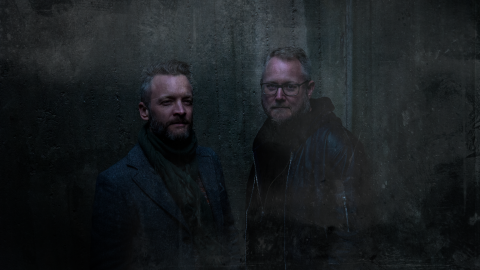
Carbon Based Lifeforms
Swedish duo Carbon Based Lifeforms smooth over their Psybient by discarding the more eclectic and discombobulated elements of the genre in a favour of a crystal clear, yet thoroughly layered, expansive synth wash. Such generally “subtle” characteristics of the group simultaneously makes their work more appealing both to general IDM fans who typically find the more “obvious” and cartoonish aesthetics of Goa/Psy genres off-putting; as well as to classic 70’s-style Ambient fans desiring a more “clean” accessible soundscape to lose oneself in.
Recommended Works:
–Hydroponic Garden [2003]
–World of Sleepers [2006]
Tags: 1990s, 2000's, acid, Ambient, aphex twin, astral projection, atmospheric, Autechre, bass communion, biosphere, boards of canada, carbon based lifeforms, coil, computers, Cosmic, dance, drugs, dub, electronic, electronic music, electronica, film score, futuristic, goa, hallucinogen, house, idm, Industrial, insanity, Israel, keyboards, man with no name, norway, ott, porcupine tree, psybient, psychedelic, psychill, psytrance, science fiction, shpongle, simon posford, Soundtracks, space, steven wilson, surrealism, Sweden, synth, synthesizers, techno, the future sound of london, the infinity project, the orb, trance, UK, underworld, USA, woob, younger brother


very nice
Cheers friend. Hope all has been well as of late.
yeah man things are cool, thanks. as far as electronic stuff goes check out NTHNG, i’ve been digging it.
gave “Microdose” a listen last night, and I too dig it
a couple of standout tracks are “human” and “in the afterglow”.
Yagya is another artist i’ve been getting into.
gave “Rigning” a listen. Good stuff!
Epic.
Some assorted thoughts on trance:
Your list of goa is ok, there’s a lot there, although I would get rid of the later stuff of Astral Projection and MWNN’s Earth Moving the Sun, replacing it with his Teleportation compilation. I would also replace X-Dream or Shakta with Transwave’s Helium or Phototropic. X-Dream is historically important, but uneven (as is often the case with earlier acts or those mixing on their albums goa tracks with ambient) and I would definitely put Cosmosis – Cosmology on such list. It is as accessible as Dimension 5 and just as exemplary in sound. As for some personal picks, I would add Ominus S/T and Cydonia – In Fear of a Red Planet.
Some psy-yet-still-goa like Koxbox/Psychopod can be mentioned along the likes of Hallucinogen, you are however right that later psy and especially its dark variants are largely forgetable. After mid to late 90s goa calcified into psytrance and darkpsy in similar manner to black metal or underground metal when it became so called extreme metal sensu later Emperor, blackened death or war metal. Then there are things with which I’m not very familiar, like so called forest trance, acts like Ka-Sol or Derango, many things which simply must be appreciated for their abstract creativity and technical proficiency, but I don’t find them interesting.
What else?
Well, the truth is that goa/psy isn’t really that dancey nor alien or far-out as outsiders may think. Dimension 5 or Total Eclipse are obviously continuation of psychodelic rock, but even more experimental things like Hallucinogen – take this track, which is simply an absolute: https://www.youtube.com/watch?v=BO8lIPzmxTk – are often fairly traditional music with normal development, culmination, etc.
Venetian Snares – Rossz Csillag Alatt Született
I find it enjoyable at least.
Lots of Biosphere can be found here.
https://biosphere.bandcamp.com/
unreal tournament
Unreal and Deus Ex are also high quality osts when it comes to typical video game standards.
you associate BoC with internet hipsterism yet recommend reading lovecraft while listening to shpongle in the same article. this proves that your associations with activities and group habits are informed by internet hipsterism. an ouroboros sucking its own dick for sustenance
this whole blog is completely inundated in sub-3-digit IQ postulation
when has it ever been inundated in low IQ postulation ???
That BoC comment was a reference to the fact that they are a commonly found among the top picks of individuals on places like Reddit, /mu/, RYM, etc. with the same interchangeable taste of “my favourite artists are Kanye, Kendrick, Radiohead and Godspeed You! Black Emperor”.
The rest of this comment is incoherent low-effort bait and not worthy of a response or clarification.
Autechre is in aclass of its own. Not only have the two been creating the most outlandish music since the early 90s, they keep doing it decades later. Last year’s “NTS Sessions” is probably the pinnacle of their entire career, the music striking a sublime balance between harsh spiky shards of icy sounds and smooth enveloping vibrations… The 8-hour long set culminates with a string of unbelievably beautiful pieces. The very last one (“All end”) offers an almost full hour of ambient delight…
Thanks for the article and electronica recommends OP.
Cheers
“…Legendary Pink Dots”
I’d be curious about your assessment of them. One of my favorite bands.
Short answer: I am by no means an expert, but I definitely dig much of what I’ve heard!
At least for now, The Maria Dimension is the album of theirs I am most familiar with. That one is for sure great, and fully in line with my “non-metal” musical tastes!
I have also casually listened to basically all the other main albums from 1982 to 1995 at least once. While so far none of their other albums have “clicked” with me to the same extent, almost all of them were interesting and engaging to some extent or another, and I’m sure at least a few will have their estimation increase the more I familiarize myself with them.
Do you have any interest in Nekrophile records and other early industrial?
Unfamiliar with that label.
“Early industrial” a la Throbbing Gristle (I presume that’s what you are referring to) isn’t really something I’m personally big into.
I have certainly been acquainted with that stuff, as well as Noise/PE/Death Industrial type acts. I don’t find such material to be too difficult to listen to at all, and I fully “understand” what they are all “trying to do”. It’s just a matter of personal taste.
As you can see, I generally have a preference for the more synthy/spacey side of Electronica as opposed to overtly percussive or “clickity” stuff; plus excessive abrasiveness/harshness/dissonance/etc. in non-guitar-based music is not something I find myself to be especially drawn to.
Absolutely I completely agree. Those genres wear their heart’s on their sleeves with little to no subtlety. But I think you’re underestimating the genre’s ability for impact on an individual level. While perhaps the artist’s intentions seen obvious, the individual experience can be quite different. It’s transparent simplicity can be the foundation for unique experiences. But of course as you said, it comes down to preference. Nekrophile records put out some of the best post mortem stuff. You might find an interest in the Lashtal “thoum aesh neith” release. Most ambient of their releases. Coil’s first release was put out by Nekrophile also.
this LAShTAL is ok
Another classic in the early IDM(?) vein of Biosphere and Future Sound of London is Human Mesh Dance’s Mindflower album. Also been heavily rotating Biosphere’s second collab with Higher Intelligence Agency, Birmingham Frequencies, and it easily holds its own with Microgravity and Patashnik especially on the track Narrowboat with its uncanny Burzum-style melody.
this Mindflower is cool
You should do a similar article on noise/power electronics. It would be cool to hear your opinion on artists like Genocide Organ, Prurient, Whitehouse, and others.
See my above reply to “S.C.”
That would certainly be a great idea for an article, however that should be done by someone more knowledgeable and enthusiastic in regards to such genres than myself.
For the record, I like what I have heard from Prurient quite possibly the most out of any Noise, and I “respect” Genocide Organ. Whitehouse however, not so much…
Excellent job on the guide; also do not forget Coil’s “Musick To Play in the Dark Vol. 2”, it’s on par with Part 1.